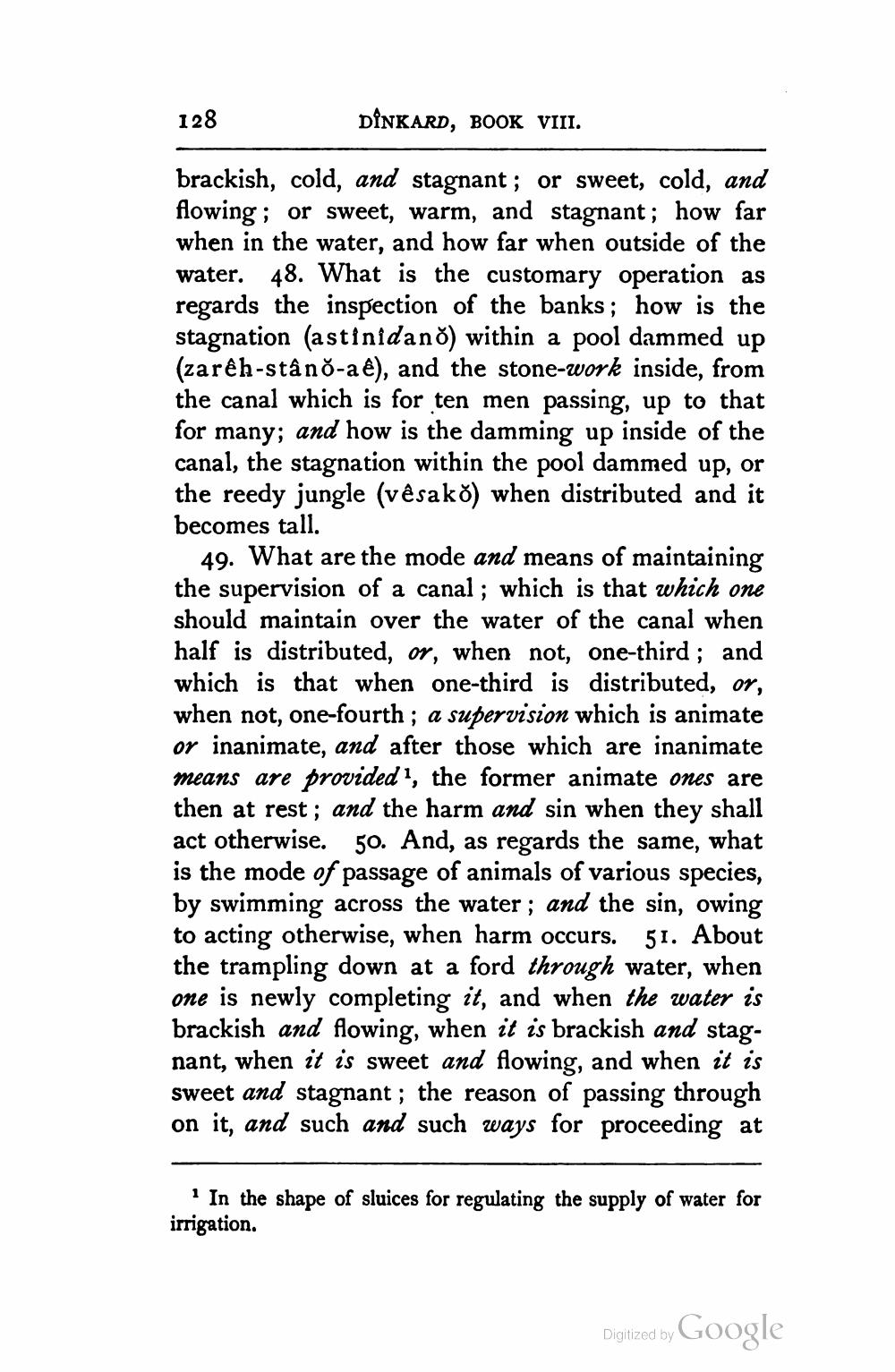________________
128
DÎNKARD, BOOK VIII.
brackish, cold, and stagnant; or sweet, cold, and flowing; or sweet, warm, and stagnant; how far when in the water, and how far when outside of the water. 48. What is the customary operation as regards the inspection of the banks; how is the stagnation (astinidano) within a pool dammed up (zarêh-stâno-ae), and the stone-work inside, from the canal which is for ten men passing, up to that for many; and how is the damming up inside of the canal, the stagnation within the pool dammed up, or the reedy jungle (vêsako) when distributed and it becomes tall.
49. What are the mode and means of maintaining the supervision of a canal ; which is that which one should maintain over the water of the canal when half is distributed, or, when not, one-third ; and which is that when one-third is distributed, or, when not, one-fourth ; a supervision which is animate or inanimate, and after those which are inanimate means are provided", the former animate ones are then at rest; and the harm and sin when they shall act otherwise. 50. And, as regards the same, what is the mode of passage of animals of various species, by swimming across the water; and the sin, owing to acting otherwise, when harm occurs. 51. About the trampling down at a ford through water, when one is newly completing it, and when the water is brackish and flowing, when it is brackish and stagnant, when it is sweet and flowing, and when it is sweet and stagnant; the reason of passing through on it, and such and such ways for proceeding at
? In the shape of sluices for regulating the supply of water for irrigation.
Digitized by Google




